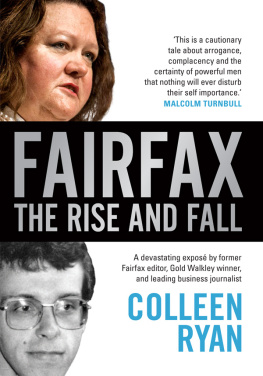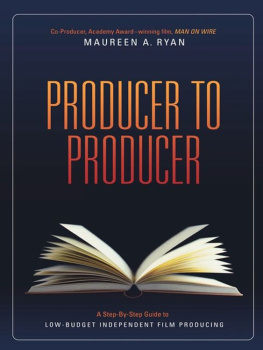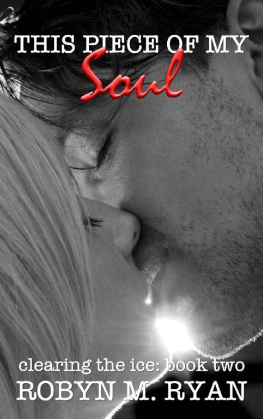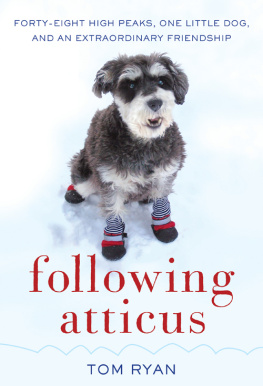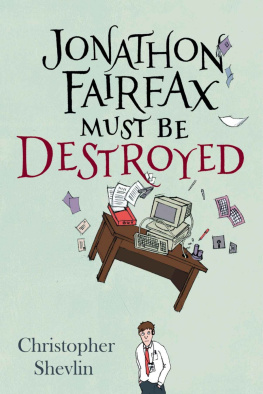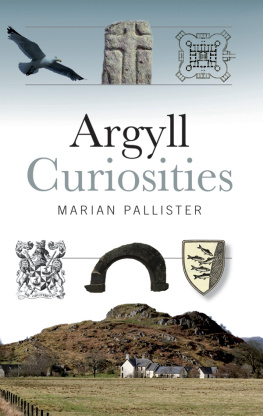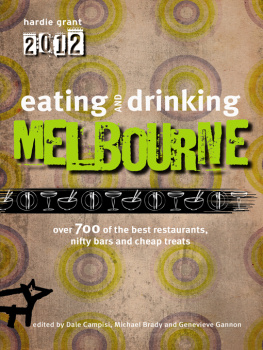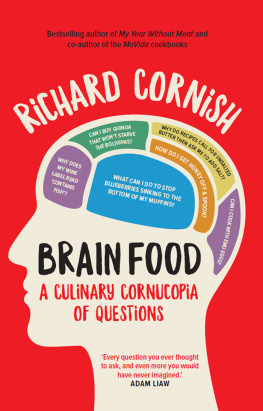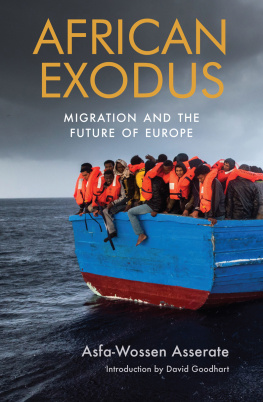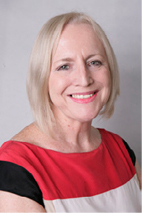
Colleen Ryan was a Fairfax journalist for over 35 years. She is a former Editor of the Australian Financial Review and during her career she was Washington correspondent for the AFR and more recently China correspondent, based in Shanghai for 6 years.
Colleen has worked across the Fairfax group including a decade with the Sydney Morning Herald and five years with National Times. She has won three Walkley awards including the Gold Walkley and received a Centenary Medal for services to journalism and publishing, as well as the Graham Perkin Australian Journalist of the Year Award.
Colleen was co-author of the last book on FairfaxCorporate Cannibals, The Taking of Fairfaxpublished in 1992.
PRAISE FOR FAIRFAX: THE RISE AND FALL
Fairfax: The Rise and Fall does more than tell the story of Young Warwick, his ambitious mother, Kerry Packer, Conrad Black and a host of other equally colourful men and women. It is a story of our times, a story of how a great company missed the boat and allowed the great advertising franchises which supported its journalism to be snatched away by others. It is a cautionary tale about arrogance, complacency and the certainty of powerful men that nothing will ever disturb their self importance.
Malcolm TurnbullFederal Member for Wentworth
A riveting account of a corporate bloodbath thats done so much to damage public life in this country: the savaging of the house of Fairfax.
David MarrJournalist, Guardian Australia
Colleen Ryan pulls no punches in this thoroughly researched, compelling story of the rise and falland fallof Fairfax. A story of family feuds, resentment, hubris, arrogance, incompetence, mismanagementwith occasional lapses into sound business practice. It seems the first chapter in the sorry tale of Fairfaxs decline was written several decades ago.
Graeme Samuel ACformer Chairman of the ACCC
For Steve, Georgia and Hamish
Prologue
Rinehart Stakes Her Claim
T he first sign that anything was amiss was the ruckus coming from the bank of elevators outside the newsroom. A group was engaged in an unusually loud conversation as it stepped out of a lift. One of the speakers had a very high-pitched voice, like that of a young girl.
Greg Hywood, Fairfaxs chief executive, then entered the newsroom with a rather large woman beside him. It was Gina Rinehart, the richest person in Australia, worth an estimated $29 billion. Any interest journalists had in their news stories that evening in March 2012 disappeared in an instant. All eyes were on Rinehart, drinking her in. She was now the biggest shareholder in Fairfax. She could buy up the whole enterprise merely by reaching into her petty cash tin.
Rinehart had just come from a meeting with Hywood and Fairfax chairman Roger Corbett where she had laid out her demand for two seats on the Fairfax board. A tour of The Australian Financial Review newsroom and a meeting with editor Michael Stutchbury was Hywoods antidote to an awkward situation.
The multibillionaire was accompanied by her burly security guard, all 2 metres of him. Rinehart was wearing a sleeveless cream top with a big fabric flower on her dcolletageall that money and no fashion sense, was the consensus as the whispers spread throughout the newsroom.
It was the first time that any of the journalists had seen Gina Rinehart in the flesh. They had seen her on television as she stood on the back of a flatbed truck in Perths Langley Park and led the gathered crowds chant of Axe the Tax to protest the federal governments ill-fated mining tax. They had read about the spectacular fights over the family fortunefirst with her stepmother, Rose Porteus, and then with her three children, John, Bianca and Hope. And they had read her poetry.

They knew that Rinehart had found politics, and that it was her own particular brand. She had money, lots of it, and no-one was going to take it from herparticularly not a tax-hungry Labor government. Rinehart was a climate change sceptic. She opposed the carbon tax. She thought workers should work harder for less money. She didnt believe in editorial independence. And now she wanted those seats on the Fairfax board.
Little wonder the journalists were transfixed. Some were horrified by Rineharts grab for political power and influence through gaining a stake in their quality newspapers. The more radical among them thought that she was a right-wing nutbag. Others simply saw her as alien to their profession. They joked about the advent of the Sydney Mining Herald.
But there was general agreement that newspapers were in enough trouble. They didnt need Rinehart as well.
~
The journalists in the newsroom that day who could also remember young Warwick Fairfaxs visit twenty-five years earlier felt a sinking sense of dj vu.
Rinehart and Fairfax had both inherited substantial wealth. Both had been raised in a rarefied environment. Both had a sense that their rightful inheritance had been taken from them. And both were so out of touch with normal social mores that they had become figures of fun.
Both also have become, for many, the symbols of the Fairfax story. But they are just the bookends of a bizarre corporate pantomime. There is so much more to the Fairfax tale than a couple of scions who, a quarter of a century apart, wanted to control a news empire. This is a show that has been running for decades.
It has had theme songs, like this one penned in 1990 by Patrick Cook, about Warwick Fairfaxs doomed takeover:
When you see a business die out
Because some turkeys tried a buyout
And the whole concern collapses in a heap
And you wonder if your purity will earn you job security
While others sell their lines on the cheap
We will all crawl to Murdoch when we go
Well all go together when we go
It has had larger-than-life characters, like the late Kerry Packer, who shifted the action to London, briefly, in the summer of 1991, during his annual visit for the English polo season. That summer he was very focused on the theatre of Fairfax.
Packer had a ritual for his London sojourn. He would take an opulent suite at the Savoy Hotel on the Strand, to which he would ship some of his own furniture to make him feel more at home, and from there he would hold court when he needed to conduct any business. The suite included meeting rooms and a large dining room, attended by Packers own staff. Polo was one of Packers passions and he had an estate outside London, but the Savoy had the added advantage of being close to the casinos, the cricket and Wimbledon. He often stayed there for weeks at a time.
In June 1991, Packer summoned to the Savoy a swag of bankers, lawyers and investors, to discuss a bid for Fairfax. This was to be the birth of the Tourang consortium, destined to win control of Fairfax when the receivers put it up for auction after the banks closed in on young Warwick Fairfax. That days events introduced another player to the pantomime: Conrad Black.
Back then, Black controlled the prestigious Telegraph Group of London (The Daily Telegraph Plc). On the advisory board of his principal holding company was former US secretary of state Henry Kissinger and former Federal Reserve chairman Paul Volcker. Margaret Thatcher attended his cocktail parties in London.
Next page
